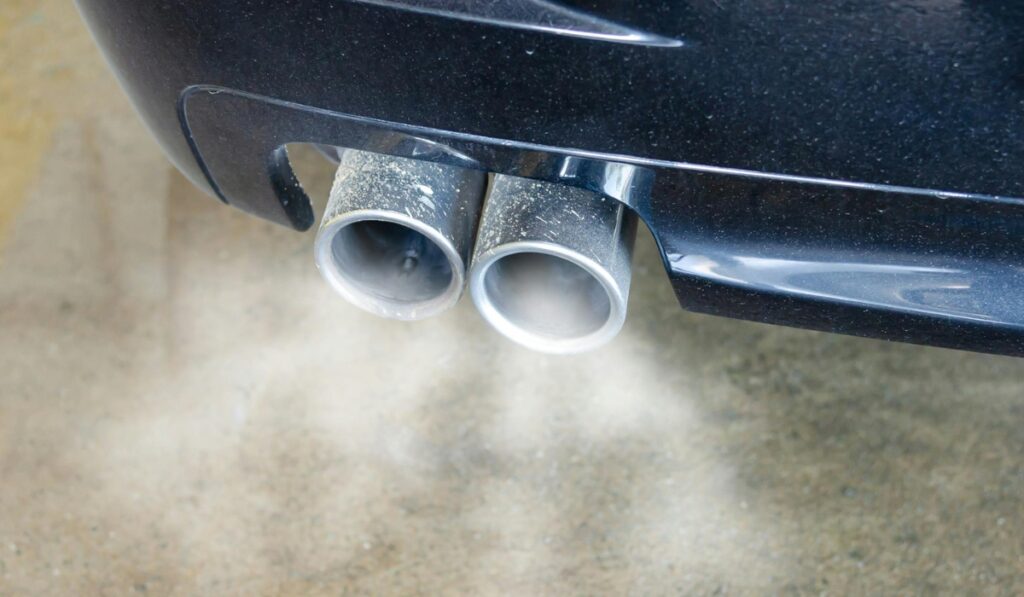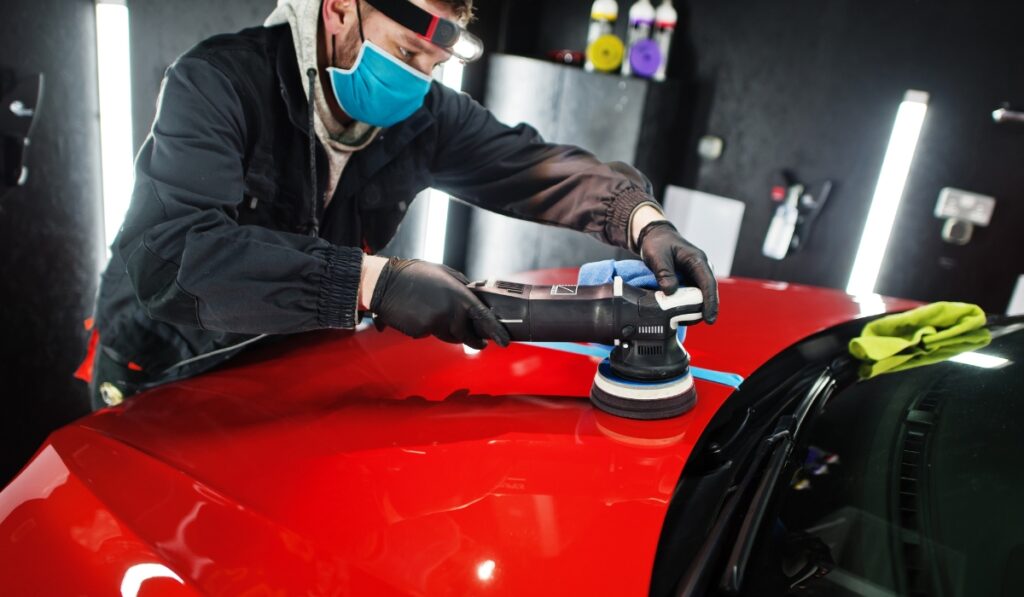WD40 is a popular and versatile product that can be found in many homes and workshops. It has a wide range of uses, from lubricating squeaky door hinges to protecting metal surfaces from rust.
However, with so many different applications, it’s important to understand its properties and any potential risks associated with it.
One common question that often arises is whether or not WD40 is flammable. Flammability is a crucial factor to consider when working with any chemical or aerosol-based product, especially when there may be a risk of fire or explosion.
Before we dive into the details, it’s worth noting that while this article aims to provide accurate information based on available sources, it’s always a good idea to consult the product label and safety data sheet for specific guidance on flammability and safety precautions related to WD40.
| Category | Details |
|---|---|
| Product Overview | WD40, or Water Displacement 40th formula, is a versatile lubricant and rust-prevention product. Common uses include lubricating hinges, loosening rusty bolts, protecting tools, and removing adhesives. |
| Composition | Mainly composed of hydrocarbons like mineral spirits and petroleum-based oils, along with corrosion inhibitors. |
| Packaging | Available in aerosol spray and liquid form. |
| Flammability | WD40 is flammable. It has a flashpoint around 120°F (49°C). Aerosol form is more flammable due to propellant gases. |
| Safety Measures | Use in well-ventilated areas, keep away from heat and open flames, avoid smoking during use, store in cool, dry places, dispose of containers responsibly. |
| Handling & Storage | Store in cool, dry, ventilated areas. Avoid heat and ignition sources. Keep containers tightly closed to prevent contamination. |
| Usage Precautions | Apply in well-ventilated areas, test on small areas first, avoid contact with eyes and skin, keep away from children and pets, do not ingest, dispose of properly. |
| Accident Response | In case of skin or eye contact, wash thoroughly; seek medical help if ingested. Use a Class B fire extinguisher for fires. |
| High-Temperature Use | Not recommended in high-temperature environments due to increased fire risk. |
Now let’s delve into the question: Is WD40 flammable?
What is WD40?
A Versatile Multi-Purpose Product
WD40, which stands for Water Displacement 40th formula, is a household name when it comes to lubricants and rust-prevention products.
It was first developed in 1953 by a chemist named Norm Larsen, who set out to create a solution that would prevent corrosion on metal surfaces.
Composition and Uses
WD40 is primarily composed of various hydrocarbons, including mineral spirits and petroleum-based oils. These ingredients give it its lubricating properties and make it effective at displacing moisture on surfaces. The product also contains additives that enhance its performance, such as corrosion inhibitors.
Due to its versatility, WD40 has become a staple in many households and industries. Some of its common uses include:
Lubricating squeaky hinges, locks, and other mechanical parts.
- Loosening rusty bolts and stuck mechanisms.
- Protecting tools and equipment from rust and corrosion.
- Removing adhesives or sticker residue.
- Preventing snow buildup on shovels or snowblowers.
Whether you’re tackling a DIY project or maintaining your car or bike, WD40 often comes in handy for a wide range of tasks.
Packaging Options
WD40 is available in various forms to suit different needs. The most common form is the aerosol spray can, which allows for easy application on small or hard-to-reach areas. It can also be found in larger containers for bulk use or specialized applications.
Now that we have an understanding of what WD40 is and its multitude of uses, let’s explore whether this popular product is flammable or not.
Is WD40 Flammable?
WD40 is a popular multi-purpose lubricant that is used in many households and industries. One of the questions that often comes up is whether WD40 is flammable or not. Let’s explore this in more detail.
The short answer is yes, WD40 is flammable. It contains petroleum-based solvents that are highly volatile and can easily catch fire. However, it’s important to note that the flammability of WD40 depends on several factors.
Flashpoint
The flashpoint of a substance refers to the lowest temperature at which it can ignite when exposed to an open flame or spark. For WD40, the flashpoint is around 120 degrees Fahrenheit (49 degrees Celsius).
This means that if the temperature reaches or exceeds this point, there is a risk of ignition.
Aerosol vs Liquid Form
WD40 is available in both aerosol spray and liquid form. The aerosol version is more flammable than the liquid form due to the propellant gases present in aerosol cans. These propellants are highly combustible and can increase the likelihood of a fire.
Proper Usage
While WD40 is flammable, it doesn’t mean you should be overly concerned about using it for its intended purposes. When used as directed, such as for lubrication or rust prevention, the risk of fire is minimal. However, it’s crucial to follow safety precautions and avoid exposing WD40 to open flames or sparks.
Common Safety Measures
To ensure safe usage of WD40, here are some important safety measures to keep in mind:
- Always use WD40 in well-ventilated areas.
- Keep away from heat sources and open flames.
- Avoid smoking while using WD40.
- Store containers properly in cool, dry places away from potential ignition sources.
- Dispose of empty containers responsibly according to local regulations.
It’s worth mentioning that while WD40 is flammable, it’s not explosively flammable like gasoline or other highly volatile substances. As long as you handle it responsibly and use it as intended, the risk of fire is minimal.
WD40 is indeed flammable due to its petroleum-based solvents. However, by following proper safety measures and using it responsibly, the risk of fire can be mitigated.
Factors Affecting Flammability
When it comes to the flammability of WD40, there are several factors that can influence the risk of ignition. Understanding these factors can help you take necessary precautions and handle WD40 safely.
Concentration of Flammable Solvents
The concentration of flammable solvents in WD40 plays a significant role in its flammability. The higher the concentration of these solvents, the more likely it is to catch fire.
It’s important to note that different formulations of WD40 may have varying levels of flammable solvents, so it’s essential to check the product label for specific information.
Temperature and Heat Exposure
Temperature also plays a crucial role in the flammability of WD40. As mentioned earlier, WD40 has a flashpoint of around 120 degrees Fahrenheit (49 degrees Celsius).
If exposed to temperatures at or above this point, the likelihood of ignition increases. Therefore, it’s important to store WD40 in cool areas and keep it away from heat sources.
Ventilation
Proper ventilation is important when using WD40. Adequate airflow helps disperse any fumes or vapors that may be present, reducing the risk of ignition.
If working in enclosed spaces or areas with poor ventilation, it’s advisable to use additional precautions or consider alternative products with lower flammability.
Exposure to Ignition Sources
Exposure to open flames, sparks, or other ignition sources significantly increases the risk of fire when using WD40. It’s crucial to be mindful of your surroundings and avoid using WD40 near potential sources of ignition such as pilot lights, welding equipment, or electrical circuits.
By considering these factors and taking appropriate safety measures, you can minimize the risk associated with using WD40. Always prioritize safety and exercise caution when working with any flammable substances.
Safe Handling and Storage of WD40
When it comes to handling and storing WD40, it’s important to take certain precautions to ensure safety. Here are some guidelines to follow:
Proper Ventilation
Ensure that the area where you are using or storing WD40 is well-ventilated. This helps in preventing the build-up of any potentially flammable vapors.
Keep Away from Heat Sources
WD40 should be kept away from heat sources such as flames, sparks, or hot surfaces. These can ignite the product or its vapors, leading to a fire hazard.
Store in a Cool, Dry Place
To maintain the integrity of WD40 and minimize any potential risks, store it in a cool and dry place. Avoid exposing it to direct sunlight or extreme temperatures.
Avoid Contamination
Keep WD40 containers tightly closed when not in use to prevent contamination. Mixing WD40 with other substances can alter its properties and increase the risk of flammability.
No Smoking Zone
It goes without saying that smoking should be strictly prohibited around areas where WD40 is being used or stored. Smoking near flammable substances can have catastrophic consequences.
Use Appropriate Containers
If you need to transfer WD40 into a different container for convenience, ensure that the new container is made of a compatible material and has a proper seal. This prevents leaks and maintains safety during storage.
Remember, these guidelines are essential for safe handling and storage of WD40. By following them diligently, you can minimize any potential risks associated with flammability.
Note:
It’s always advisable to refer to the specific instructions provided by the manufacturer on the product label for precise handling and storage recommendations.
Now that we’ve covered safe handling and storage practices for WD40, let’s move on to understanding some important usage tips and precautions in the next section.
Usage and Precautions
When using WD40, it’s important to understand how to properly handle the product to ensure safety. Here are some helpful tips and precautions to keep in mind:
Read the Instructions
Before using WD40, take a moment to read the instructions on the product label. This will provide you with specific guidance on its proper usage and any precautions you should be aware of.
Use in Well-Ventilated Areas
To minimize exposure to potentially flammable vapors, it is recommended to use WD40 in well-ventilated areas. Open windows or work outdoors if possible.
Test in a Small Area
If you’re applying WD40 to a surface for the first time, it’s a good practice to test it on a small, inconspicuous area beforehand. This allows you to ensure compatibility with the material and prevents any unexpected reactions.
Avoid Contact with Eyes and Skin
WD40 is not intended for direct contact with eyes or skin. If accidental contact occurs, immediately rinse the affected area with plenty of water and seek medical advice if necessary.
Keep Away from Children and Pets
Like many household products, WD40 should be stored out of reach of children and pets. Its misuse can lead to potential hazards.
Do Not Ingest
Never consume or ingest WD40 under any circumstances. If swallowed, seek immediate medical attention or contact a poison control center.
Proper Disposal
When disposing of empty containers or unused WD40, follow local regulations for hazardous waste disposal. Do not pour it down drains or dispose of it in regular trash bins.
By following these simple usage tips and precautions, you can ensure safe handling of WD40 and reduce the risk of accidents or flammability-related incidents.
Remember:
It’s always better to err on the side of caution when working with any potentially hazardous substances like WD40. Stay informed about its properties and make safety a priority.
By understanding the flammability aspects of WD40, practicing safe handling and storage, and adhering to usage precautions, you can safely utilize this versatile product for various applications.
FAQ
What are Common WD40 Uses?
WD40 is a versatile product with numerous uses, making it a household and industrial staple. Its main use is lubrication and rust prevention. Lubricating squeaky hinges, locks, and mechanical parts, freeing rusty bolts and jammed mechanisms, and protecting tools and equipment from rust and corrosion are common uses.
How to Safely Store WD40?
WD40 must be stored safely to avoid fires. Keep it cool, dry, and out of direct sunlight and harsh temperatures. WD40 is flammable, therefore keep it away from heat, flames, and ignition sources. To prevent contamination and flammable vapour escape, seal containers tightly. WD40 should be stored in well-ventilated spaces.
What Are the WD40 Safety Precautions?
WD40 requires many safety precautions. Start by using it in well-ventilated spaces to avoid combustible vapours. Avoid ignition by keeping the product away from heat, flames, and sparks. Wear gloves and goggles to avoid skin and eye contact. Do not swallow the product or inhale the vapours.
WD40 Accident: What to Do?
If WD40 touches your skin or eyes, take action immediately. If skin contact, wash thoroughly with soap and water. Douse WD40-contaminated eyes with water for 15 minutes and seek medical assistance. Do not induce vomiting if ingested; call a doctor or poison control centre.
Can WD40 Be Used in High Temperatures?
WD40 is flammable, so use it carefully in high temperatures. WD40 ignites at 120 degrees Fahrenheit (49 degrees Celsius). At temperatures at or over this threshold, fire danger increases significantly. Thus, WD40 should not be used in high-temperature environments.
Conclusion
After exploring the topic of whether WD40 is flammable, it is clear that WD40 does have flammable properties. The main ingredient in WD40 is a petroleum-based solvent, which is highly flammable.
However, it’s important to note that the flammability of WD40 depends on several factors such as the presence of sparks, open flames, or high temperatures.
While WD40 can be a useful lubricant and rust-prevention product, it’s essential to be aware of its flammability characteristics and take necessary precautions to ensure safety.
By following proper handling procedures and taking necessary safety measures, users can effectively utilize WD40 while minimizing the risk of accidents or fire hazards.
Remember to always prioritize safety when working with any potentially flammable substance.





